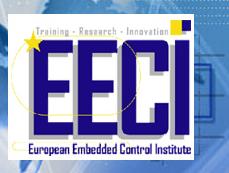April 10-14, 2017 | Paris, France
 Many of the most challenging issues in Science and Technology need of mathematical models written in terms of Partial Differential Equations (PDE). This is true not only in the context in the classical contexts of structural or aeronautical engineering, for instance, but also in Mathematical Biology, Finances and Social Sciences. And in most applications control theoretical tools are also needed in order to design, observe or actuate. In the “Introduction to the control of Partial Differential Equations” series of lectures we shall introduce the main analytical tools required to control systems written in terms of Partial Differential Equations (PDE) and their numerical approximation and simulation. We shall also point towards some potential future perspectives of research.
Many of the most challenging issues in Science and Technology need of mathematical models written in terms of Partial Differential Equations (PDE). This is true not only in the context in the classical contexts of structural or aeronautical engineering, for instance, but also in Mathematical Biology, Finances and Social Sciences. And in most applications control theoretical tools are also needed in order to design, observe or actuate. In the “Introduction to the control of Partial Differential Equations” series of lectures we shall introduce the main analytical tools required to control systems written in terms of Partial Differential Equations (PDE) and their numerical approximation and simulation. We shall also point towards some potential future perspectives of research.
We shall first present some of the most relevant applications to Sciences, Engineering and Technology in which these problems arise from an historical viewpoint. After a short introduction to the finite‐dimensional theory, we shall describe the basic theory for the wave and heat equation, the most elementary PDE models, to later address some important multi‐physics models. Then we shall address the problem of the numerical approximation of control problems exhibiting the methods needed in order to reduce PDE control problems into the finite‐dimensional setting in an accurate manner. We shall also present some interesting concepts and results on switching, sparse, averaged and bang‐bang control, and the turnpike property ensuring that, most often, in long‐time horizons, optimal controls and trajectories are close to the steady‐state ones. To conclude, we shall present a list of open problems and directions of possible future research.



